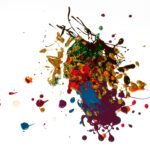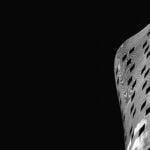Are you ready to uncover the hidden secrets of acupuncture? In this article, we will delve into the intriguing realm of lesser-known fun facts about this ancient healing technique. Acupuncture has long been celebrated for its ability to promote balance and harmony within the body, but did you know that it holds a plethora of fascinating truths just waiting to be discovered? Join me as we embark on a journey through the lesser-known aspects of acupuncture, unveiling its captivating history, surprising benefits, and intriguing practices. Get ready to be amazed by the fun facts that will deepen your understanding and appreciation for this holistic health practice.

Lesser-known Fun Facts About Acupuncture
Acupuncture, one of the oldest forms of healthcare known to humankind, has its fair share of intriguing and lesser-known fun facts. While most people are aware of its use of thin needles and ancient origins, there is so much more to this ancient healing technique. So, let’s delve deeper and uncover some fascinating aspects that distinguish acupuncture from other forms of medicine.
The Art of Needle Placement: A Masterpiece of Precision
Did you know that there are over 2,000 different acupuncture points on the human body? These points are carefully chosen by acupuncturists with the aim of restoring balance and promoting healing. But what makes it even more remarkable is the incredible thinness of the needles used in acupuncture. In fact, they are as thin as a strand of hair! This precision allows for minimal pain and discomfort during the treatment process, making it an attractive option for those seeking holistic healing.
As acupuncturists strategically insert these slender needles, it’s akin to an artist skillfully painting on a canvas. Each needle is placed with intention, targeting specific points that correspond to your unique health concerns. It’s a true masterpiece of precision and individualized care, tailored to meet your body’s unique needs.
“The careful placement of ultra-thin needles in acupuncture is akin to an artist creating a masterpiece on a canvas.”
The Diagnostic Power of Your Tongue and Pulse
In the world of acupuncture, your tongue and pulse are not simply ordinary body parts. They hold profound diagnostic value, acting as gateways to uncovering the mysteries of your health. When you visit an acupuncturist, they may take a glimpse of your tongue and feel your pulse to gather important information about your overall well-being.
Each wrinkle, coating, color, and texture on your tongue tells a story. By analyzing these distinct features, acupuncturists gain unique insights into the internal imbalances within your body. Additionally, the pulse reflects the state of your energy or “qi” flow within various meridians, helping identify potential blockages or deficiencies.
“Your tongue and pulse reveal the hidden messages of your body’s health, offering acupuncturists valuable clues to restore balance within your system.”
Prevention and Comprehensive Care
Acupuncture doesn’t just focus on treating existing ailments; it is a holistic approach to preventative medicine as well. Unlike conventional medicine, acupuncture seeks to address the root causes of imbalances before they manifest into distressing symptoms. This preventive approach allows individuals to maintain optimal health and well-being, even if they currently don’t have any specific complaints.
So, whether you’re seeking relief from a persistent condition or simply looking to optimize your overall health, acupuncture has you covered. By embracing this ancient healing technique, you can take proactive steps towards achieving balance and harmony within your mind, body, and spirit.
“Acupuncture, a true champion of preventative medicine, empowers you to prioritize your well-being and invest in your long-term health.”
The Multifaceted Nature of Acupuncture
While acupuncture is commonly associated with pain relief, its benefits extend far beyond that singular purpose. Acupuncture’s comprehensive approach addresses not only localized discomfort but also how imbalances in one area can affect the entire system. By treating the root cause, rather than just the symptoms, acupuncture aims to restore harmony and balance throughout the body.
Moreover, acupuncture can be effectively complemented with other treatment modalities, such as herbal medicine or chiropractic care. The integration of these different therapies works synergistically, amplifying the healing effects and promoting a holistic sense of well-being.
“Acupuncture’s multifaceted nature resonates with its ability to address imbalances at the root, fostering a holistic sense of harmony within the body.”
In conclusion, exploring the lesser-known fun facts about acupuncture unveils its rich history, delicate needle placement, diagnostic power of the tongue and pulse, preventive approach, and multifaceted nature. By embracing acupuncture, you not only embark on a journey of healing but also unlock the wisdom of an ancient practice that continues to captivate and improve the lives of many.
So, are you ready to dive into a world where tiny needles create symphonies of balance and harmony? Discover the wonders of acupuncture and embrace the lesser-known fun facts that make it a truly remarkable healing art.
Acupuncture has been practiced for centuries and continues to provide numerous benefits for individuals seeking alternative forms of healing. If you’re curious about this ancient practice and want to dive deeper into the world of acupuncture, make sure to check out our Acupuncture Blog. Our blog covers a wide range of topics related to acupuncture, including its history, techniques, and the latest research findings. Whether you’re a seasoned acupuncture enthusiast or just starting to explore this fascinating field, our blog will provide you with valuable insights and information. So why wait? Click here to visit our Acupuncture Blog and expand your knowledge about this incredible practice: Acupuncture Blog.
FAQ
Q: How long has acupuncture been practiced?
A: Acupuncture is one of the oldest forms of healthcare in the world, dating back over 2,000 years.
Q: Where does the word “acupuncture” come from?
A: The word “acupuncture” comes from the Latin acus (needle) and pungere (to prick).
Q: How many acupuncture points are there on the human body?
A: There are over 2,000 different acupuncture points on the human body.
Q: What are acupuncture needles made of?
A: Acupuncture needles are incredibly thin, about as thin as a strand of hair. Originally, acupuncture needles were made of stone, bamboo, and bone.
Q: How do acupuncturists diagnose a patient’s health?
A: Acupuncturists feel your pulse and look at your tongue to gain information about your state of health and plan a treatment. They also use the tongue and pulse as diagnostic tools.
- Unlock Elemental 2 Secrets: Actionable Insights Now - April 2, 2025
- Lot’s Wife’s Name: Unveiling the Mystery of Sodom’s Fall - April 2, 2025
- Photocell Sensors: A Complete Guide for Selection and Implementation - April 2, 2025
















